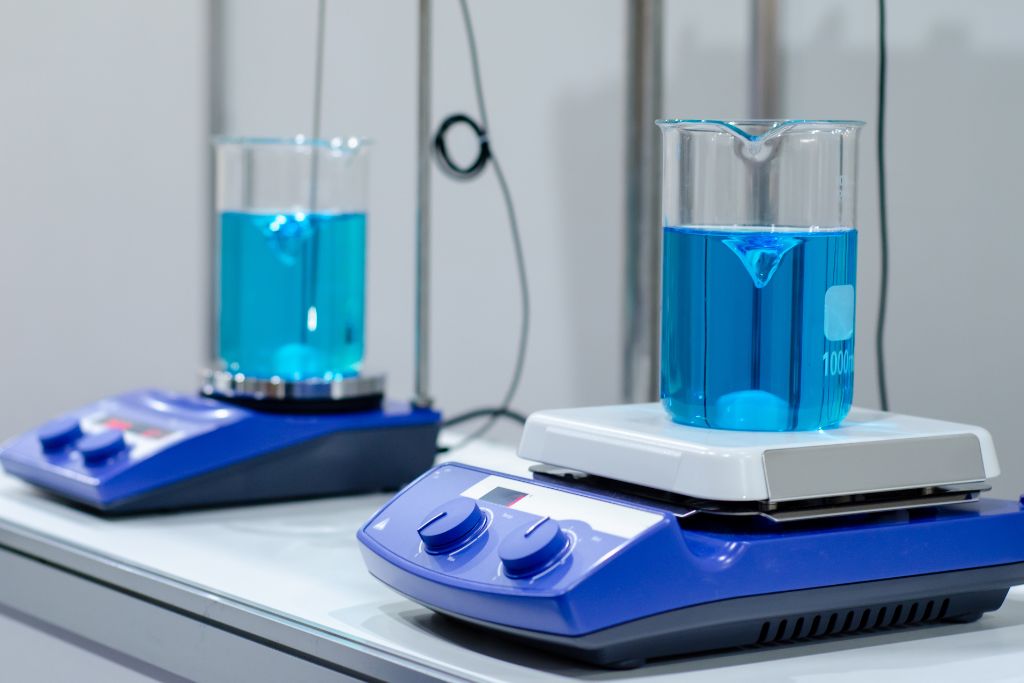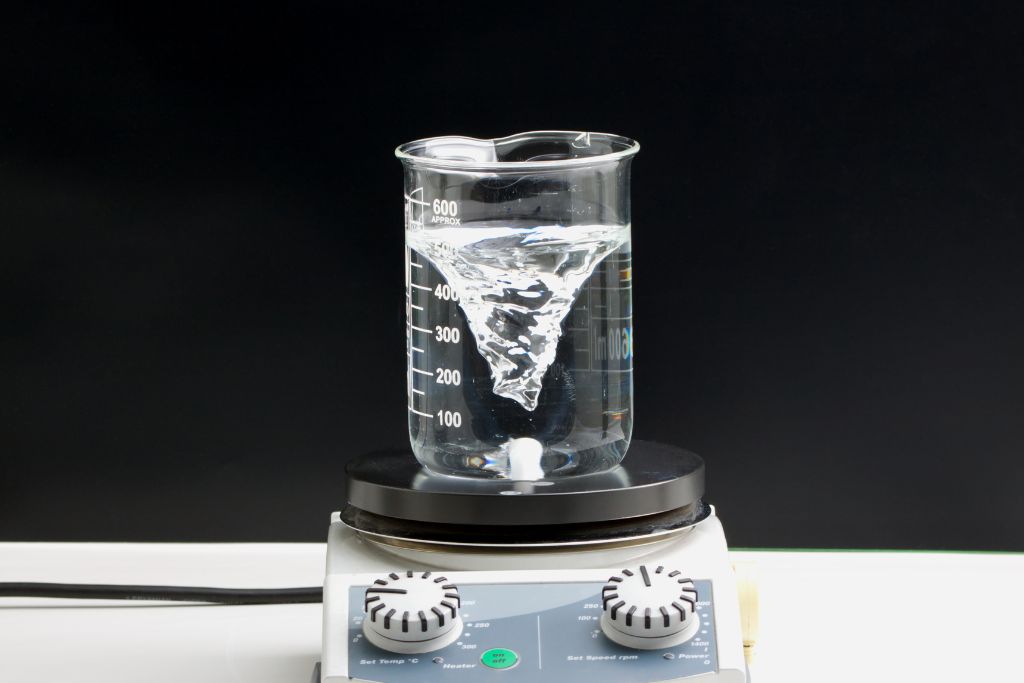Magnetic hotplate stirrers are essential tools in many laboratories and kitchens. These devices combine the capabilities of heating and stirring, making them ideal for tasks ranging from chemistry experiments to food preparation. Understanding how magnetic hotplate stirrers work will enhance your efficiency in both scientific and culinary applications.
With a range of options available, it’s important to consider the key features that meet your needs. From temperature control to stirring speed, selecting the right model can greatly affect your results. Whether you’re a scientist or a home cook, knowing how to use these stirrers can elevate your work.
Key Takeaways
- Magnetic hotplate stirrers provide heating and stirring in one device.
- Selecting the right stirrer depends on your specific requirements and applications.
- Proper usage can lead to efficient and reliable results in your projects.
Fundamentals of Magnetic Stirring
Magnetic stirring is a widely used technique in laboratory settings. It involves creating a rotating magnetic field to mix solutions efficiently. Understanding the principles and components behind this method is crucial for effective use in various experiments.

Principles of Magnetic Stirring
The basic principle of magnetic stirring involves a stir bar that is placed within a liquid. When the magnetic stirrer is activated, a rotating magnetic field is generated. This field causes the stir bar to spin, creating movement in the liquid.
The spinning action creates a vortex, which helps to mix the solution uniformly. The speed of rotation can be adjusted, allowing you to control how quickly the mixture is stirred. This method is especially effective for solutions that require consistent mixing without introducing air or heat.
Components and Design
A typical magnetic stirrer consists of two main components: a stir bar and the stirrer device itself.
- Stir Bar: Usually made from magnetic material and coated with Teflon or glass, it is submerged in the solution.
- Stirrer Device: Contains a stationary electromagnet and a control panel with knobs for speed and temperature.
You can find models that also integrate a hot plate, allowing for simultaneous heating and stirring. This combination is beneficial when working with solutions that need to be heated while being mixed. Understanding these components helps you choose the right stirrer for your specific application.

Operational Guidance
Using a magnetic hotplate stirrer effectively requires careful setup, adherence to safety protocols, and regular maintenance. Focus on each aspect to ensure optimal performance and safety.
Setting Up the Device
- Location: Place the hotplate stirrer on a stable, level surface. Ensure that it is away from flammable materials and sources of moisture.
- Power Connection: Connect the power cord to a grounded outlet. Make sure the switch is off before plugging in.
- Beaker Placement: Center your glass beaker or flask on the hotplate. The size of the vessel should match the designated heating area to avoid uneven heating.
- Positioning the Stir Bar: Before starting, place the Teflon-coated magnetic stir bar inside the vessel. Ensure it’s free to rotate without hitting the walls.
- Setting Controls: Adjust the temperature and stirring speed knobs to your desired settings. Start with lower speeds to avoid splashing.
Safe Usage Protocols
- Monitoring: Always supervise the device while it is in use. Do not leave it unattended when hot.
- Personal Protective Equipment (PPE): Wear safety goggles and lab coats when operating the stirrer, and use heat-resistant gloves when handling hot containers.
- Heat Management: Allow the unit to cool down before cleaning. Avoid touching the hotplate surface during and after use.
- Chemical Handling: Be cautious when working with hazardous materials. Ensure proper ventilation in your workspace.
- Emergency Procedures: Know how to quickly disconnect power in case of an emergency. Familiarize yourself with the location of fire extinguishers and first aid kits.
Maintenance and Cleaning
- Routine Checks: Inspect the power cord and plugs regularly for damage. Unplug the device when not in use.
- Cleaning: Allow the hotplate to cool completely. Use a damp cloth to wipe the surface. For stubborn stains, use a mild detergent.
- Stir Bar Removal: After cleaning, remove the stir bar from the vessel. Clean it separately to prevent contamination.
- Calibration: Periodically check and calibrate your device to ensure accurate temperature readings.
- Storage: When not in use, store the unit in a dry, cool place. Avoid stacking heavy objects on top of the hotplate.
Following these guidelines will help ensure the safe and effective operation of your magnetic hotplate stirrer.

Applications and Uses
Magnetic hotplate stirrers are essential tools in both laboratory and industrial settings. Their ability to mix fluids efficiently while controlling temperature makes them valuable in various applications.
Laboratory Procedures
In laboratories, magnetic hotplate stirrers are widely used for mixing solutions, especially in chemical and biological research. You can utilize them for tasks such as:
- Preparation of Solutions: Mix reagents and solvents quickly to achieve consistent concentrations.
- Heating and Stirring: Maintain specific temperatures while stirring, which is crucial for reactions needing heat.
- Cell Culture Work: Perfect for mixing culture media, ensuring even distribution of nutrients.
Choose the right stir bar and adjust the speed and temperature settings to suit your task. Magnetic stirrers help enhance reproducibility and reliability in your experiments, aiding in achieving accurate results.
Industrial Processes
In industrial environments, magnetic hotplate stirrers are crucial for processes such as:
- Chemical Production: Efficiently mix large volumes of chemicals for production and formulation.
- Food and Beverage: Combine ingredients consistently to ensure quality and uniformity in products.
- Pharmaceuticals: Manufacture and mix compounds, maintaining precise controls over temperature and speed.
These stirrers enhance safety by eliminating movement and reducing spills. Their reliable performance allows for continuous operations, making them indispensable in modern industry. Their versatility improves efficiency across various sectors.
Technical Specifications
Magnetic hotplate stirrers come with various specifications that enhance their functionality and usability in laboratory settings. Key features like temperature control, stirring speed, and material durability significantly affect performance and reliability.
Temperature Control
Effective temperature control is crucial for precise experimental conditions. Many hotplate stirrers feature adjustable temperature settings, typically ranging from 0°C to 310°C. For instance, devices like the IKA RCT Basic can reach high temperatures with a heat output of 600 watts.
Some models include digital displays that show the current temperature and allow you to set the desired level accurately. Additionally, temperature probes, such as the PT100, are often included for increased accuracy. This allows you to monitor real-time variations, ensuring consistent results during experiments.
Stirring Speed and Capacity
Stirring speed is another vital aspect of hotplate stirrers. Most units offer adjustable speed settings, varying from 50 to 1500 rpm. This flexibility allows you to handle different types of solutions and volumes effectively.
The stirring capacity usually depends on the specific model. For example, some hotplate stirrers can manage liquids with a total volume of up to 5 liters. This makes them suitable for various applications, from simple mixing to complex chemical reactions.
Material and Durability
The materials used in magnetic hotplate stirrers significantly impact their durability and chemical resistance. Many high-quality models feature tempered glass surfaces, which provide resistance to scratches and temperature fluctuations.
Certain models use non-slip silicone to enhance safety by preventing containers from sliding off during stirring. Additionally, robust casing materials offer protection against spills and chemical exposure. Consider these factors while selecting a hotplate stirrer for your lab to ensure lasting performance and reliability.
Selection and Purchase
When choosing a magnetic hotplate stirrer, you need to focus on quality, cost, and support options. Understanding these key factors will help you make an informed decision that meets your laboratory needs.
Identifying Quality Equipment
To select a reliable magnetic hotplate stirrer, look for features that indicate durability and performance. Consider the following aspects:
- Stirring Speed and Temperature Control: Ensure the equipment can reach speeds of at least 1500 rpm and temperatures up to 400 °C. This range is suitable for various applications.
- Build Materials: Look for devices made from robust materials that resist corrosion and wear. Stainless steel surfaces are often a good choice.
- Microprocessor Control: This feature provides accuracy in heating and stirring, allowing for consistent results.
- Ergonomic Design: Equipment that is easy to use can enhance your lab productivity. Check for intuitive controls and a user-friendly interface.
Cost Considerations
Pricing can vary widely depending on features and brands. Here are some tips to keep in mind:
- Budget: Determine your budget before starting your search. Basic models can cost as low as $60, while high-end options can reach several hundred dollars.
- Features vs. Cost: Consider which features are essential for your work. While high-priced models may offer advanced functionalities, they may not always be necessary.
- Vendor Comparison: Compare prices from different suppliers to find the best deal. Websites like VWR and Cole-Parmer offer a variety of options at different price points.
Warranty and Support
A solid warranty and reliable customer support are important when making your purchase. Review the following:
- Warranty Terms: Look for a warranty that covers both parts and labor for at least one year. Longer warranties reflect greater manufacturer confidence in their product.
- Customer Support: Check if the manufacturer provides accessible customer service. This should include phone support, email communication, or online chat options.
- User Reviews: Reading reviews from other users can offer insights into the equipment’s reliability and the manufacturer’s support quality. Look for feedback on response times and problem resolutions.
Taking the time to evaluate these factors will lead to a successful purchase.
Frequently Asked Questions
This section addresses important questions about hot plate magnetic stirrers. You will learn about their purpose, differences from other stirrers, safety precautions, potential limitations, alternative stirring methods, and features to consider when selecting one for your laboratory.
What is the purpose of a hot plate with a magnetic stirrer?
A hot plate with a magnetic stirrer is designed for mixing and heating solutions. It provides a controlled environment for chemical reactions or biological experiments. The magnetic stirrer ensures uniform mixing while the hot plate maintains the desired temperature.
How do magnetic stirrers differ from other types of stirrers?
Magnetic stirrers use magnetic fields to rotate a stir bar inside the solution. This method is quieter and often more efficient than mechanical stirrers. Mechanical stirrers can be bulkier and may introduce more air into the solution, which is not ideal for sensitive applications.
What are some common safety precautions to follow when operating a hot plate magnetic stirrer?
Always ensure that the hot plate is on a stable, heat-resistant surface. Avoid touching the hot surface during and after use to prevent burns. Use appropriate personal protective equipment, such as gloves and goggles, to protect yourself from spills or splashes.
What are some potential limitations or drawbacks of using a magnetic stirrer?
Magnetic stirrers may not be effective for very viscous solutions. They also depend on the size and strength of the stir bar, which can affect stirring efficiency. In some cases, there may be a maximum volume limit for effective mixing.
What alternative methods can be utilized for stirring solutions without a magnetic stirrer?
Alternative methods include manual stirring using a glass rod or using a mechanical stirrer. You can also use overhead stirrers for larger volumes or more viscous solutions. Each of these methods has its own advantages and disadvantages.
What features should be considered when selecting a hot plate magnetic stirrer for laboratory use?
Consider the stirring speed range and heating capacity when selecting a unit. Look for features like digital controls for precision and safety shut-off options. The size of the hot plate and the volume it can accommodate are also important factors to evaluate.
